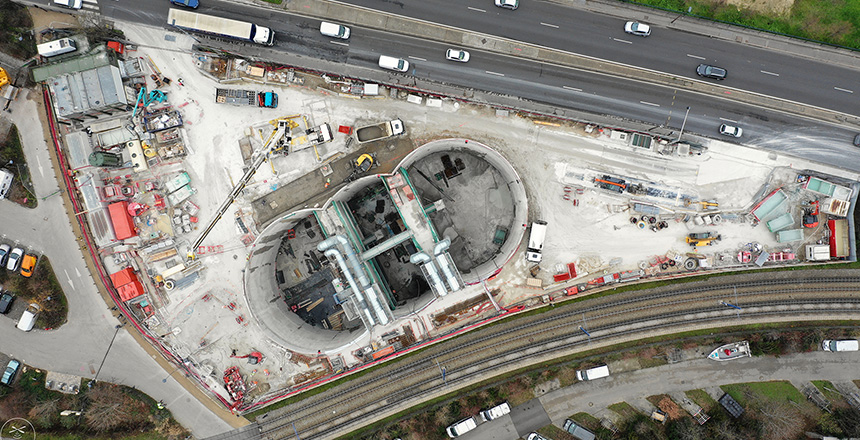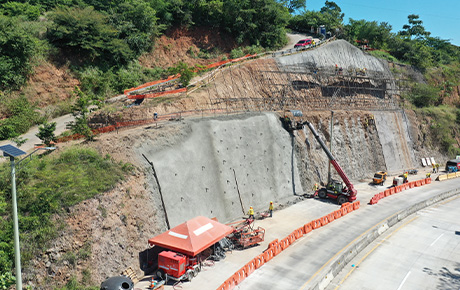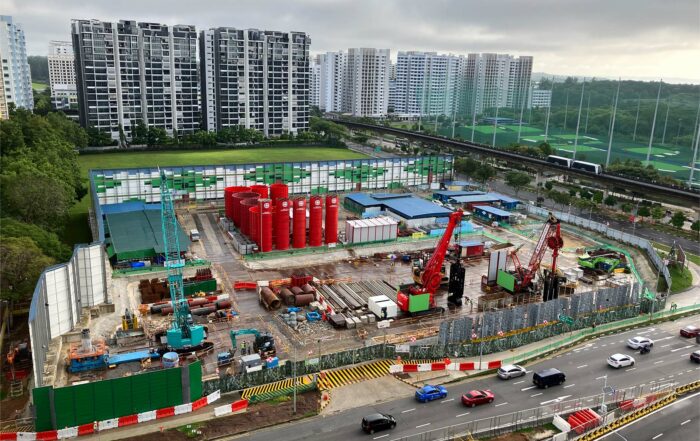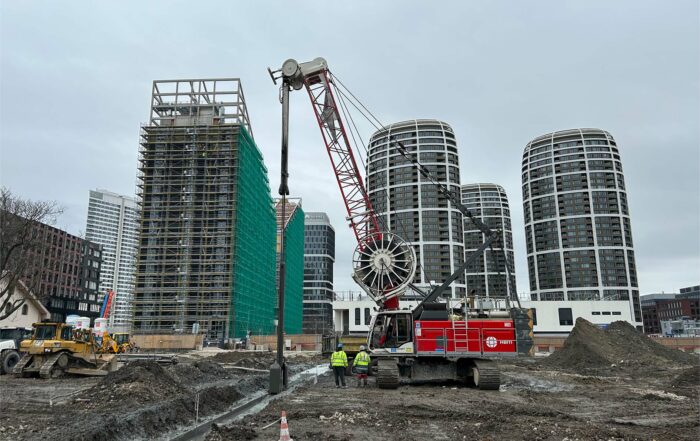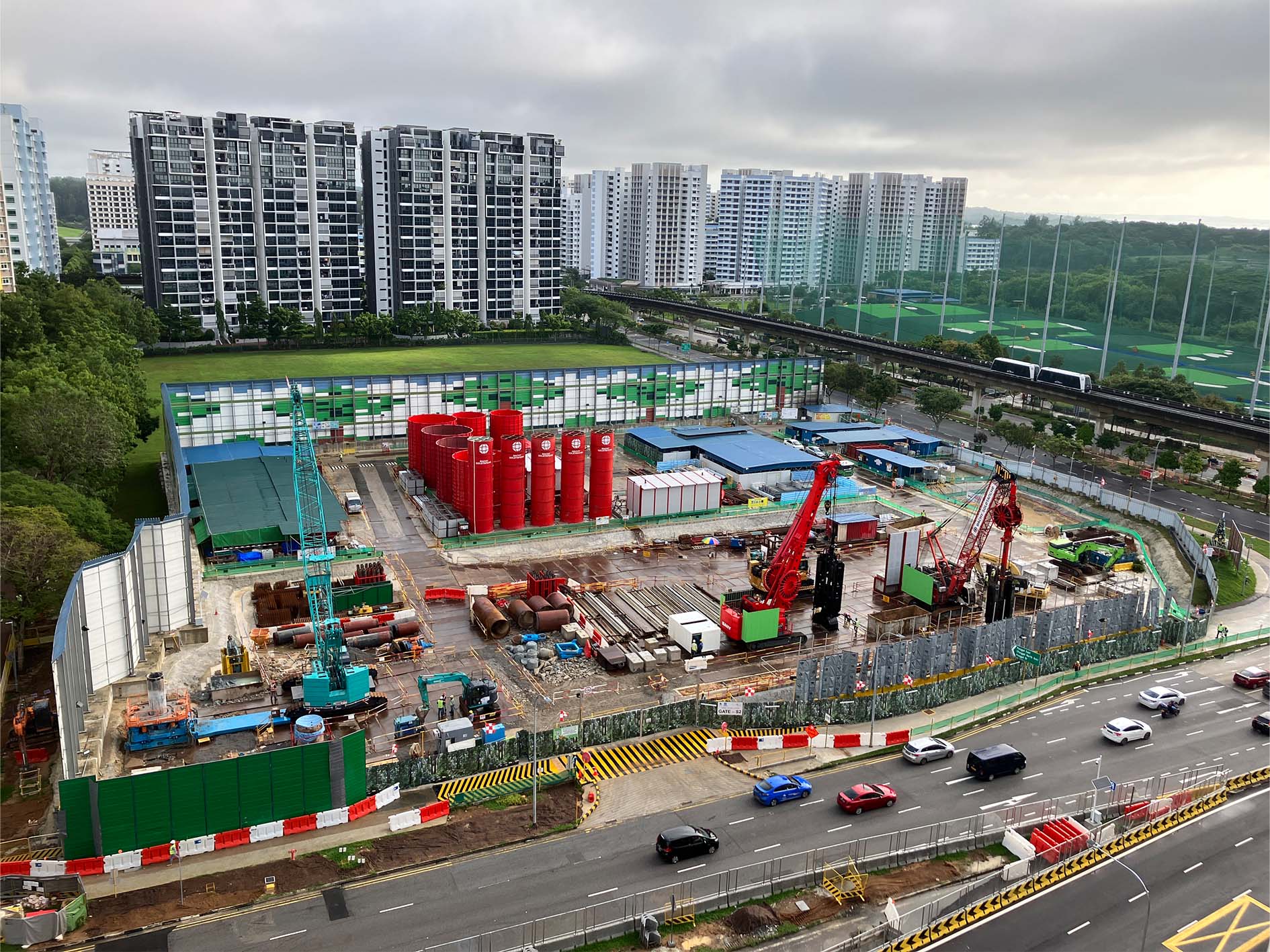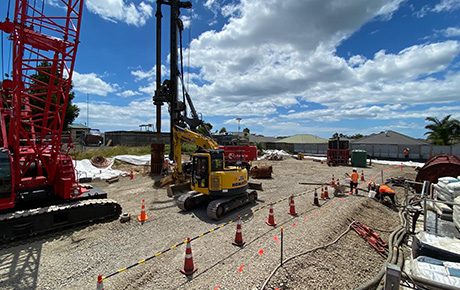15/02/2019
Grand Paris Express – Work continues of T3A package
So far, around a quarter of the special works have been completed. Starting from May 2019, activity will ramp up, mainly with the walls for the Pont de Sèvres station, two auxiliary structures, and the walls of the exit shafts and the connection with the station at Issy-les-Moulineaux. Currently, around 100 Soletanche Bachy France employees are working on the injections. The increase in activity will come into effect with the resumption of work on the walls, which will see the workforce rise to 150. This intense rate of work is expected to continue until the end of the year. Here’s a snapshot, element by element, of what has already been achieved along the future path of the tunnel boring machine (TBM).
P13 Launch shaft – Ile de Monsieur
The diaphragm walls that make up the trefoil structure were completed in 2018. The injected plug is currently being completed in the chalk that is found around the entry point for the TBM and behind the diaphragm wall.
Three activities are going on simultaneously to allow us to stay on schedule. The work site is characterized by a lack of space, which means civil engineering, earthmoving, and injection have to be done at the same time.
The trefoil is now backfilled to a depth of 20m. The buttress beams and intermediate slabs are installed as work goes down. The final backfill is due at a depth of 34m.
The aim is to start assembling the TBM at the bottom of the shaft at the end of spring 2019, with boring due to start in the summer.
Pont de Sèvres station
Preparatory work on the Pont de Sèvres station is underway. This mainly involves reconstructing a SEVESC network (Versailles and Saint-Cloud water company) outside the footprint of the station to create a landing stage along the branch of the Seine opposite the Ile Seguin to act as a temporary quay to remove spoil.
The teams completed the self-bored micropiles for the reconstruction of the definitive quay in October 2018. The removal of 40 concrete piles discovered during demolition at the foot of the bank was also finished in December 2018.
In the corridor that will connect the station with the terminus of Metro line 9, the first phase of digging the box, made up of 84 Berlin-type piles and screening with sprayed concrete, was completed in December 2018. There are still six phases to be carried out in diaphragm wall or Berlin-type walls, working around diversions in networks and traffic.
Prior to the installation of the definitive walls, the temporary walls anchored by fibre-glass anchors that will enable deep purges will be carried out starting in June 2019.
Auxiliary structure P12 – ZAC SAEM
Special work carried out on the technical facility in the ZAC SAEM was completed in December 2018, which involved building a box in diaphragm walls, 200 micropiles to anchor the future raft, and the bottom injected with 600 bore holes. Pumping tests are underway to validate the quality of the work.
Work is continuing in this sector with injection of the branches that will connect the tunnel to the existing shaft, dug three years earlier as part of a test phase line 15.
Two drilling rigs are in action, with tolerance limited to 2%, taking into account the depth of the operation (40m).
This involved waterproofing a zone of chalk for 4.5m around the future branch, which will be excavated using traditional techniques under a 30m head of water. Bore holes radiating outwards, from a reduced surface area, will be injected with bentonite slurry/cement and ultra-fine cement starting in February 2019.
Issy station
At Issy station, work on the diaphragm walls that will form the box, with a thickness of 1.2m and to a depth of 40m, will be completed by end-October 2018.
The civil engineering teams are currently laying the cover slab with a thickness of 2m.
Jet grouting to reinforce the piles on the hundred-year-old viaduct on the RER C line which goes over the correspondence box was completed in October 2018. These tangential jet grouting columns with a diameter of 1.2m reinforce the foundations of this sensitive structure and will counter any settling generated by the passage of the TBM.
Two more structures have yet to be built, namely the exit and the connection with the RER C, which should resume before the end of 2019.
However, injections into the ancient alluvium outside the entrance to the station has been in full swing since September 2018 and will continue through much of 2019.
In the 200 metres before it arrives in Issy station, the TBM has to go through a mixed zone composed of soft chalk at the base and ancient alluvium (sand) above. This means there is a major risk of the sand shifting, which could result in excessive surface subsidence, or even sinkholes. To manage this risk below a busy street and amidst sensitive networks, it is necessary to make injections in the alluvium to form a solid vault over the machine.
The chief difficulty was successfully passing between the existing networks. More than 1,000 bore holes to a depth of between 15 and 20m have to be made. Major reconnaissance and preparation work was carried out with the use of a suction tube to expose the multitude of existing networks, to plot their actual position on a geometric chart.
This data was then entered in the Castor software to draw up plans for these halos of boring in 3D. Once these halos had been defined, reservation tubes for each bore hole were positioned with the right angle and bearing before backfilling the whole area up to the roadway. The two drilling rigs could thus work without any risk of damaging a network.
Similar treatment will also be required when the TBM goes underground to the east of the station, with even greater technical difficulties, since the tunnel passes under some buildings.
Auxiliary structure P09 – Henri Barbusse
The first phase of work consisted of creating a temporary retaining structure in the Henri Barbusse park, to clear a working platform at the foot of the bank, enabling the installation of the shaft’s diaphragm walls.
A lutetian wall made up of 15m piles was built from the top of this bank. It was anchored by a bed of stays, installed in November 2018 from a temporary deck.
Work on the parts in nailed walls on the two sides of the lutetian wall began at the end of 2018.
The start of the shaft using a Hydrofraise® to a depth of 60m is scheduled for summer 2019.
